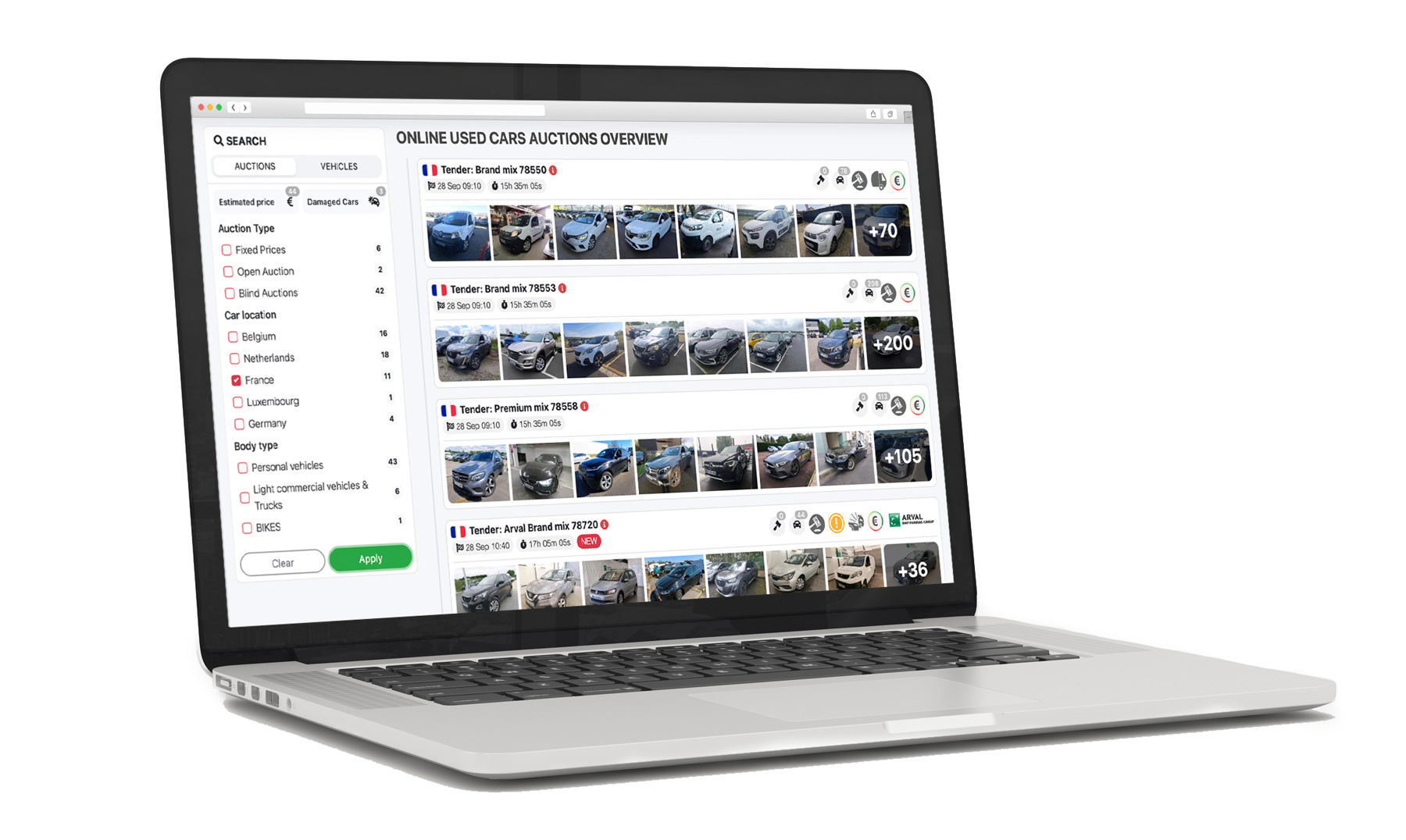Our breakdown of the used car market in 2022 and predictions on its evolution in 2023. Discover what’s in store for the market and if used cars will get more or less expensive.
Get the most current insights and explore our recently published analysis with updated information for 2024.
Just released: Our 2024 used car market predictions!
Due to the state of the world, everyone is wondering if used cars will be getting cheaper any time soon or if used cars will continue to grow in price.
Growing demand, shortage of parts, supply chain issues, and an unstable political situation in Europe – these are all the challenges the car market, both new and used, has been going through in the last couple of years. How has it impacted it? Are used cars still going up in price? Will used cars get cheaper in 2023? What’s in store for the used car market in the future? These are all the questions we are going to take a look at in this article.
As with every analysis, we must understand the past to look into what the future may bring. Let’s dive into it!
HOW DID USED CARS GET SO EXPENSIVE?
Let’s start from the beginning of 2022. The year started off strong, with sales of used cars exceeding those a year prior across many European markets like Germany, Italy, France, Spain, Austria, Switzerland, and the UK.
The German market was challenged with a steep decline in the number of sales transactions, while new regulations in France inflated the prices of used cars.
Italy went through a radical growth turn of events. According to data specialist Marco Pasquetti, “during January 2022, a 36-month-old used car with a mileage of approximately 60,000 km was purchased at an average of 49.7% of its list price, an increase of 13.5% compared to a year ago.”
Spain went through a similar thing, where a shortage of supply directly resulted from higher demand.
As a result of the semiconductor shortage, many new cars get offered without additional options, making a used car more appealing as well.
At the beginning of the year, Autovista forecasted that “used-car transactions in the big five European markets may return to pre-pandemic levels this year. Data for January 2022 is only available for Germany and Italy, but the year-on-year growth rates, of 5.6% and 34.3% respectively, suggest both used-car markets are on track to exceed pre-pandemic levels in 2022.”
The limited availability of new cars and a looming financial crisis for many people marked the very beginning of the year. This, in turn, fueled the demand and desire for used vehicles.
Things started to shift in March for the automotive industry and the entire socioeconomic and political situation in Europe.
The war in Ukraine resulted in sanctions on Russia, and fuel and gas prices rose immediately. With fuel prices skyrocketing, owning a car, new or used, had just become much more expensive. With nickel and palladium also in shortage, producing new cars became increasingly challenging.
During March, some of the big brand names like BMW and Volkswagen suspended their production.
CHANGES ON THE USED CAR MARKET
From May, the used-car market saw a sales decline, especially in numbers for France and Spain.
Inflation, political uncertainty, and the overall state of an (almost) post-pandemic world are all intertwining together to create a status quo in the automotive industry. Simply put – there are not enough cars. New cars are not produced in the same quantities as before the pandemic and before the Ukraine war, which also reflects on the used car market.
However, during this period, production at BMW and Volkswagen also resumed, and alternative sources of raw materials were found.
On the other hand, inflation is rising – 7% for the EU and the UK – and infecting the automotive industry as well.
Autovista reports that the “volume of used-car transactions retreated in all the big five European markets in the first half of 2022” including France, Germany, Italy, Spain, and the UK. France and Germany are experiencing the sharpest declines during this period. “Compared to the first six months of 2021, Germany’s used-car market declined 14.6% in the first half of 2022, with 2.88 million transactions.”
Spain experienced a similar decline in used-car transactions by 4,5%, according to GANVAM, a car dealer’s association.
According to the UK’s Society of Motor Manufacturers and Traders (SMMT), used-car transactions were down by 8,3% during the first half of 2022.
France’s used-car market saw a decline of 12,4%, and there was a 7,1% decline in Italy.
What’s our main takeaway after seeing this evolution of events? As inflation, costs of living, and economic uncertainty rise, it’s no wonder that the used car market is experiencing a slowed-down demand.
This brings us to the present moment, the final quarter of 2022, and our predictions for the market’s future in 2023.
ARE USED CARS GETTING CHEAPER?
At its foundation, the new car market is still struggling with the same issue it’s been struggling with for a long time – the supply of new cars. In other news, electricity and gas prices are skyrocketing, so people focus more on lowering living costs. This means an unwillingness to overspend, whether on new or used cars.
What does this all mean for the prices of used cars? In short, it seems that prices have either already reached their maximum or will start to cool down and stabilize. Autovista’s detailed latest September report supports this theory. 
Let’s break down the most interesting takeaway points from this graph. Austria keeps on struggling with limited supply, while Germany “shows signs of significant consolidation…This is another sign that ‘the air is out’ and that the peak has possibly been reached across the board.” (source)
The Spanish and Swiss markets also struggle with a lower supply of used cars, while Italy reports some growth in residual values.
WILL USED CAR PRICES GO DOWN IN 2023?
The used car market peaked during the height of the pandemic, hitting an unprecedented number. But the pandemic left long-lasting consequences on the automotive industry, and the used car market finds itself under the pressure of its own success. The inevitable cool-down leaves us wondering – which direction is it going in? What’s in store for us?
The issue of new cars and the lowered supply is still projected to continue even into 2024. As we’ve seen, used cars are deeply interconnected with new cars. Any small shifts in the new car market will also have a ripple effect that will influence how the used car market behaves.
European Used Car Market: Size & Forecast with Impact Analysis of COVID-19 (2021-2025), a study written in 2021 forecasts that the “European used car market is projected to rise in the next four years i.e. 2021-2025 tremendously (…) due to rising disposable income, increase in urban population, rising online sales of used cars, growing total population, growing benefits of used car over new car, etc. Yet the market faces some challenges such as economic slowdown, difficulty in financing of used car, lack of standardization and unorganized regulations, etc.”
If we add the political crisis and inflation to the above list of challenges, the study was mostly on point, although the peak and the pricing plateau arrived sooner than it expected.
Although this might not be the end of a turbulent and eventful market. According to Autovista’s own analysis, “The rise in prices may have slowed lately, but the market has not yet reached its turning point”.
Used-car price index by country
So, where is it all heading in 2023? What’s in store for the used car market? In times of political distress, it’s hard to predict how conflicts will evolve; currently, a lot depends on the war in Ukraine. We do know that inflation is here to stay (or possibly get worse) and that supply chain issues will continue into 2023.
“A recovery is expected in 2023 versus 2022 on both, new- and used-car markets, but this does not mean 2023 will be a rebound year for the automotive industry”, Autovista states in their latest market analysis.
So there you have it folks, a detailed look into how prices of used cars changed over the course of the last year and a brief look into 2023. Whatever the outcome, trading used cars will always be a sustainable and profitable business for car dealers and automotive professionals that we our eCarsTrade platform caters to.
Take a look at our latest auctions and let’s take on 2023 together.



